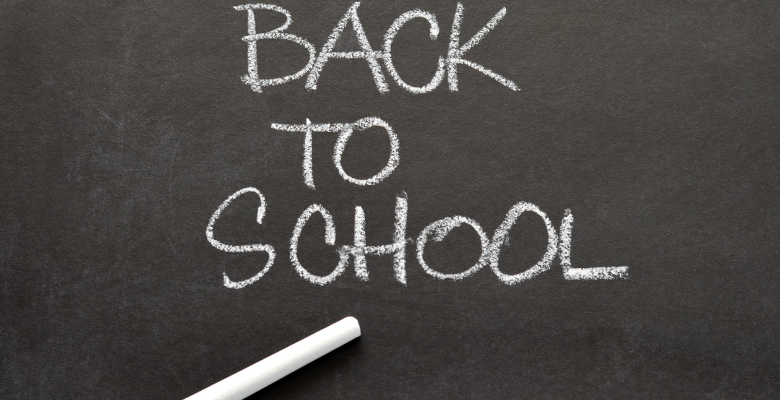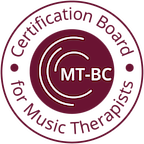5 Ways to use music to help transition your life back into school mode.
 Let’s Do This!
Let’s Do This!
Here we are–the summer is winding down, and school is approaching! Heading back to school after a long vacation could be challenging for children, and as a parent, you might be wondering how to get your kids and yourself back into the school routine. Music is one way to help your kids get into the school groove. Research has shown that music profoundly impacts cognitive abilities such as memory, attention, and focus. Music triggers emotional/behavioral responses when trained and practiced to do so. For instance, when you hear your musical ringtone, you are started to hear that sound and have a behavioral (flinch, reach for the phone) or emotional (excitement, dread) response to the sound. So, below are tips to help you get yourself and those kiddos back into the school routine as the parent, teacher, or caregiver.

Rise and Shine!
The morning is one of the best times to kick-start your child’s day. As such, you can create a wake-up playlist that can lift your child’s mood and get him/her excited about the day’s possibilities. I suggest choosing music that aligns with your beliefs, the messaging you want your child to take in, and fun! For example, turn on a radio Morning Show each morning filled with laughter and fun, or create a “power” playlist with songs related to energy, motivation, strength, etc.).
 On The Road Again!
On The Road Again!
Car rides to and from school can be tedious, but playing music can turn it into an enjoyable experience. Compile a playlist with tunes your child enjoys and encourage them to sing along, dance, or even create karaoke competitions. It not only keeps your child entertained, but it also strengthens the bond between you and your child. And I strongly recommend letting your child listen to a song repeatedly. Car time is a great time to provide children the opportunity to self-regulate, and sometimes hearing words or a melody on repeat may do just that – regulate them before or after school. Let the kiddos in your world create playlists and give them space in the car to listen to them. Take the time to listen to your child’s song requests and attempt to find them. My kids have become masters at explaining songs to me, and we spend a fair amount of time searching for songs they want to be played in the car. I do this intentionally because car time is valuable for connection and regulation for you and the little ones in the car. If you have multiple kiddos, take turns, or give each kiddo a certain amount of time and then switch playlists to the others. Get creative. And don’t forget to include yourself in the lineup. Kiddos need to watch the caregiver use music to regulate and engage with the car. Lead by example.
Quick story: I went through a short period where I took the bus to school and I will never forget that the school bus driver played a popular radio station and it felt like every morning the song, “I’m Blue” by Vaecii. But that song now is really helpful for me when I’m doing a large transition in life – I actually find myself remembering that song and singing it or looking it up. That is because the bus was a little stressful to me and I had just made a big move (Colorado-Arkansas) and my emotions were in constant need of regulation. It was a popular song to kids on the bus, and everyone would sing it, so I created a positive memory with a community that met me at an emotional level before going into the classroom.
 So, if your child is going on the bus, provide the opportunity for them to have a way to listen to music (if appropriate and they show interest). Help them create a playlist on an old-school iPod if they don’t have a phone or electronic device. Or ask them what songs they hear on the bus. Do kids pay attention? Is it background noise? Bring their attention to it and let the music do the work!
So, if your child is going on the bus, provide the opportunity for them to have a way to listen to music (if appropriate and they show interest). Help them create a playlist on an old-school iPod if they don’t have a phone or electronic device. Or ask them what songs they hear on the bus. Do kids pay attention? Is it background noise? Bring their attention to it and let the music do the work!
Real quick, I also have to throw in that car time is an excellent opportunity to also to throw in songs that support what they are learning in school (preferred songs with multiple repetitions of a certain letter sound, counting, themes: freedom, confidence, being a hard worker, resilience, etc.).
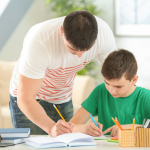
Homework!
Does your child get easily distracted during homework time? Do you find that they cannot concentrate for long periods? Adding background music can be a game-changer. Research has found that soothing instrumental music can enhance cognitive function and increase productivity. Explore what works best for your child. If they are a musician, having a song with their instrument in it might be distracting. Or if they strongly dislike the sound of water and it makes them pee every 10 minutes, you must avoid river/ocean study music. Take some time to see what works best. Once the right music is found for your child, soon their brain will connect the music to concentration, and it will help with transitions into homework periods of the day!
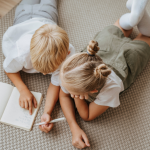
Study and Memorizing!
Children learn best through play, and singing songs is a great way to teach them the alphabet, numbers, and even a foreign language. Look for educational songs, rhymes, and catchy, fun, and entertaining tunes. Find a variety of songs that cover different topics, and encourage your child to sing along, dance or even make up their lyrics.
The reason music is so effective for learning and memorizing is that it shares neural processes in the brain! To learn more about this, check out my blog, “Music And The Brain.”
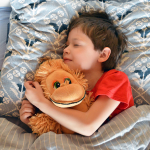
Rockabye!
A calm and relaxing bedtime routine helps children fall asleep quickly and peacefully. Playing soft, relaxing music before bedtime can help your child unwind and fall asleep faster. Choose serene and slow tunes that match the child’s breathing rate, creating a rhythmic pattern that will help them drift off into a peaceful slumber.
However, if bedtime is a struggle, and there are heightened emotions and big feelings, I recommend engaging your child in music they feel connected to and can sing along to. Having them sing (even if it is not a calm, peaceful song) will help them take breaths and create a sense of control over their breath patterns. Using preferred music can also serve as a bridge for connecting with your child(ren) in a meaningful way that can help you bring them into a comfortable space to fall asleep.
Preferred music can also be used as a distraction from fears or anxieties that are coming up for children at night. Suppose they have positive associations with songs in their preferred playlist. In that case, they can better tap into positive memories (i.e., a memory of dancing with mommy in the kitchen, singing with dad in the car, doing the parachute with a friend, etc.).
Of course, soft, quiet music is preferred, as it has been shown to be effective in calming down our system. Still, if your child needs to engage with preferred music to be able to feel safe and comfortable at bedtime, it could likely be because the associated memories, messaging, or emotions that it provokes are calming and give them a sense of well-being that they need to let down and go to bed.
Hope this helps with the transition back to school!

